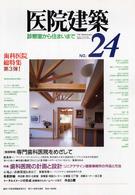- ホーム
- > 洋書
- > 英文書
- > Nature / Ecology
Full Description
Due to the diverse properties of Ricinus communis (castor), this book provides a comprehensive account of castor as a 'climate resilient and value-added crop.' It explores the morphological variations, various cultivation techniques, genotypic differences, suitable soil types, and the crop's yield. The book also discusses the phytoremediation efficiency of castor, focusing on its role in restoring degraded lands, abandoned mining sites, and lands contaminated by heavy metals.
The application of suitable plants for the restoration of degraded lands is an efficient method due to its ecological and economic viability. Castor is a hardy angiosperm with multiple benefits. It serves the dual purpose of being an excellent phytoremediator and a source of bioenergy. Additionally, castor has proven effective in treating several human diseases. The castor plant's ability to thrive in stressed soils makes it particularly suitable for the phytoremediation of polluted lands in various climatic conditions. Given its wide range of industrial uses, castor has gained significant attention for further exploration of its biology, cultivation techniques, and genotypic variations.
This book is of interest to teachers, researchers, botanists, capacity builders, and policymakers. It also serves as good reading material for undergraduate and master students of botany, ecology, and environmental sciences. National and international agricultural scientists, ecologists, and policymakers will also find it a valuable resource
Contents
.- Chapter 1:Plant and environment interaction: special reference to phytoremediation of heavy metals using Ricinus communis L.- Chapter 2: Botany, geographical distribution, cultivation techniques and crop productivity of Ricinus Communis L.- Chapter 3: Genetic variability and breeding opportunities in castor bean (Ricinus communis L).- Chapter 4: Nipping an innovative method to increase the yield of castor .- Chapter 5: Medicinal properties of Ricinus communis L. oil and their applications: An overview.- Chapter 6: Optimizing biodiesel production from non-edible castor oil through the development of a bi-functional catalyst: a case study.- Chapter 7: Castor plant in Ericulture: opportunities and challenges.- Chapter 8: Ricinus communis: an abiotic stress-tolerant crop for reclamation of wasteland reclamation .- Chapter 9: Abandoned mine sites restoration using an industrially important crop, Ricinus communis L .- Chapter 10: Phytoremediation of heavy metals from the metal-polluted soil using Ricinus communis .- Chapter 11:Assessing the Suitability of Cement Industry Effluent for Irrigating Eight Different Genetic Varieties of Castor bean (Ricinus communis L.): A Case Study.








